Occupation Actor Years active 1942–1983 | Name Ron Randell Role Film actor | |
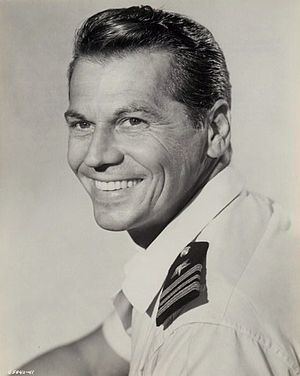 | ||
Full Name Ronald Egan Randell Died June 11, 2005, Woodland Hills, California, United States TV shows O.S.S., The Vise, Lovers and Friends Movies King of Kings, Kiss Me Kate, Savage Pampas, The Loves of Carmen, Whity Similar People Laya Raki, Hugo Fregonese, Henry Cornelius, Lesley Selander, George Sidney | ||
IN HONOR OF RON RANDELL
Smithy (Billy Hughes excerpt)
Ronald Egan "Ron" Randell (8 October 1918 – 11 June 2005) was an Australian film and stage actor who also worked in the US and the UK.
Contents
- IN HONOR OF RON RANDELL
- Smithy Billy Hughes excerpt
- Biography
- Early career
- US visit
- Return to Australia and Smithy
- Columbia Pictures
- Return to the stage
- Britain
- Return to Hollywood
- The Kiss
- Return to Australia
- 1960s
- 1970s
- New York
- Personal life
- Radio credits
- Theatre
- Filmography
- References
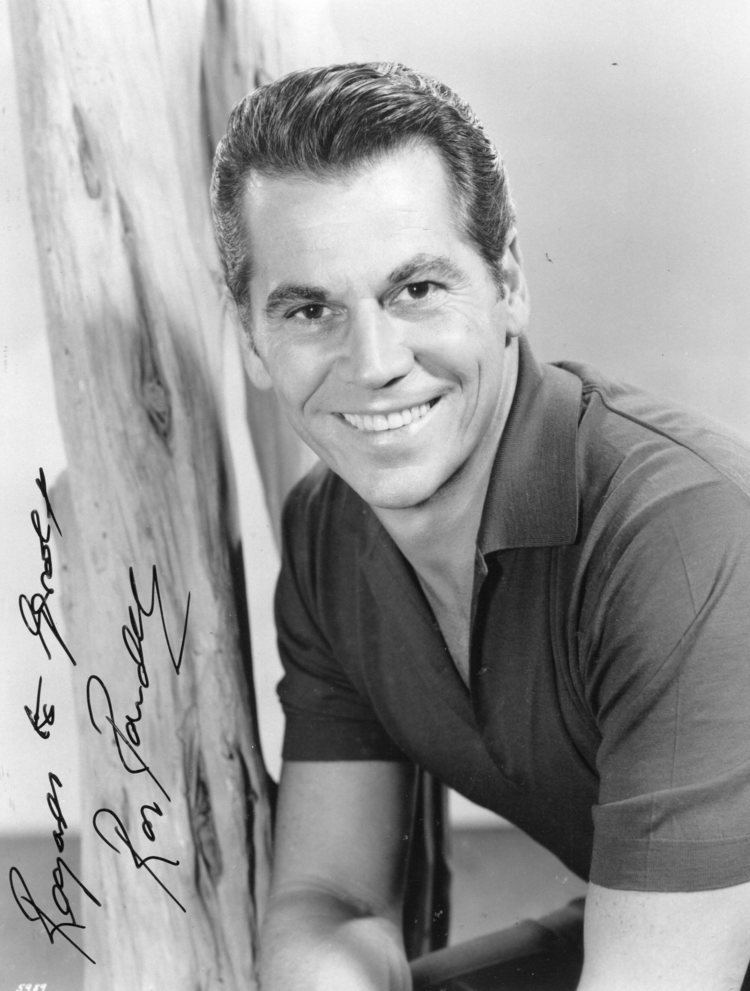
Biography
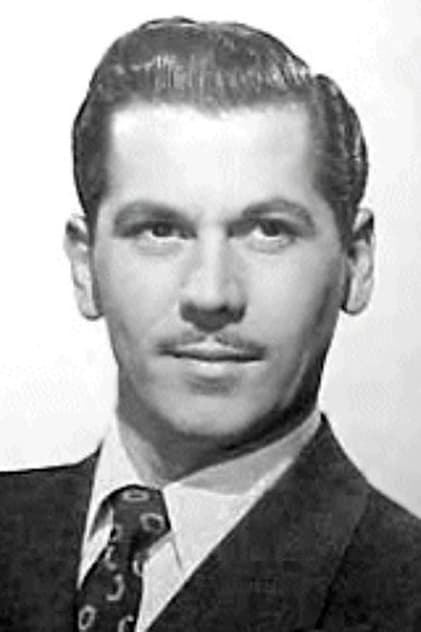
Randell was the son of Ernest Randell (d 26 May 1946) and Louisa Edgar, who had married in 1912. Randell's great-great-grandfather was one of the main developers of the South Australia colony from 1836. His grandfather ran camel trains across the Nullabor Plain to Coolgardie. Randell's father was born in Broken Hill and did a variety of jobs.
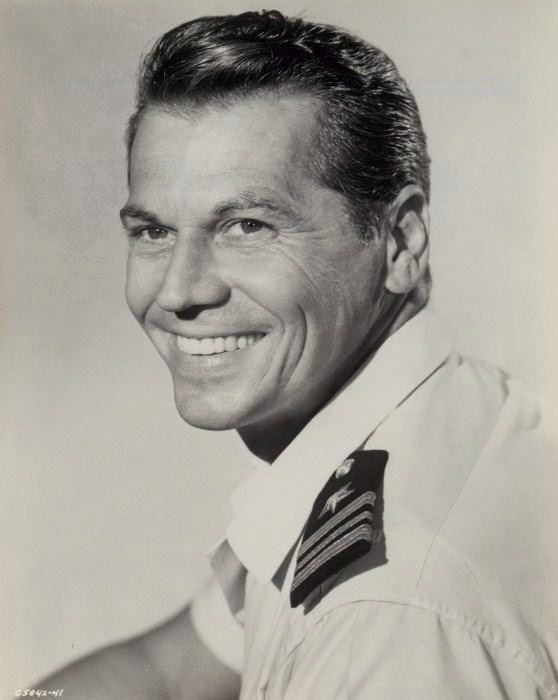
Randell was born in Sydney and was the eldest of three sons, the others being Reg and Norm. He attended Marist Brothers in North Sydney. He left school at the age of 14, and went to work as an office boy in a Sydney finance office.
Early career

Aged fourteen, Randell participated in a few sketches at a social acting club and did an unpaid job for radio station 2UE. He made his first professional appearance for the ABC at 14 for the Children's Sessions. He soon started acting regularly on children's serials. After eight months, Randell quit his office job to concentrate on acting.
He soon established himself as a leading male juvenile for radio, acting for 2KY Players, George Edwards, BAP and on Lux Playhouse. He also worked as a compère for variety shows, in particular with Jack Davey.
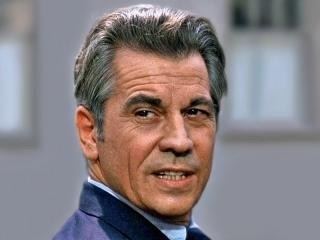
He made his legitimate stage debut aged 19, in a production of Quiet Wedding at the Minerva Theatre in Sydney. Randell later said, "I moved out of radio and back into theatre because I was becoming a left-hand actor. I would hold the script in my right hand and do all my acting with my left hand."
The majority of his stage work was done at the Minerva Theatre, including performances in Of Mice and Men. Randell says police were ready to arrest the cast of Of Mice and Men because the play featured the word "whorehouse". "Fortunately we received a standing ovation and the police decided in the circumstances not to make any arrests."
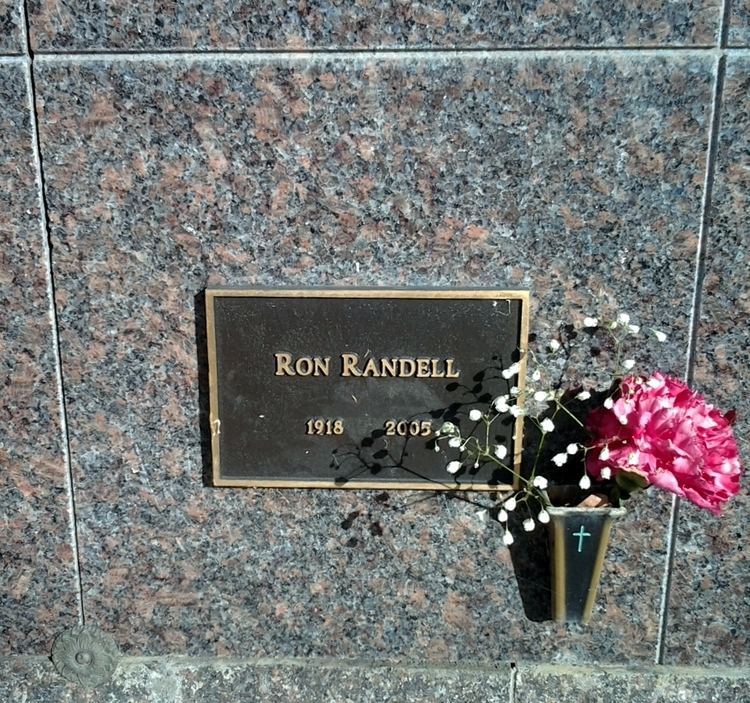
Randell served in the army, and was cast in some Australian wartime propaganda short films such as 100,000 Cobbers (1943) and South West Pacific (1943). He was discharged on medical grounds in 1943. "They threw me out of the army... because I had tuberculosis, warning me I wouldn't live to be an old man", said Randell. One report said he was suffering sinus trouble, was having trouble remembering his lines in shows and was on the verge of a nervous breakdown. He decided to seek treatment at the Mayo Clinic in Los Angeles, and travelled to the USA in 1943.
US visit
Randell went to Hollywood. He tested for the role of Stanley in Lifeboat (1944) for Alfred Hitchcock, among other parts, but could not get any film work. He went to San Francisco and got a role in a stage play. When that ended he moved to New York and tried to get stage work there, but had no luck. He returned to Sydney and resumed his theatre and radio career. Around this time he changed his professional name from "Ron Randall" to "Ron Randell" to avoid confusion with actor George Randall.
Return to Australia and Smithy
In October 1944, Randell made his feature film debut in A Son Is Born, opposite Peter Finch and Muriel Steinbeck.
His big break came in November 1944, when he was spotted by producer Nick Perry at the Minerva Theatre performing in While the Sun Shines with Finch. This led to Randell being cast as the lead in Smithy, a biographical film about the pioneering Australian aviator Sir Charles Kingsford Smith, who made the first flight across the Pacific (from the United States to Australia) in 1928. His casting was announced in May 1945. Producer Perry sid, ": "Randell has been selected not only for his achievements as a fine actor, but as the type of virile Australian who embodies the spirit and qualities so typified by 'Smithy.' We have taken a long time over our selection, but we are extremely happy with our choice."
The release of A Son is Born was held off until after Smithy had come out, to take advantage of its publicity. Smithy was a big hit at the Australian box office, and Randall was widely acclaimed as a local star. A Ron Randell Film Club was established and Randell would be mobbed at personal appearances.
Columbia Pictures
Smithy had been made with funds from Columbia Pictures, who offered Randell a long-term contract and he moved to Hollywood in October 1946.
Producers Lou Appleton and Bud Small had a deal with Columbia to make a new series of pictures about Bulldog Drummond. According to Appleton, "We wanted a new film face and someone wi'h a British way of speaking." They were impressed with his Smithy footage and put him in Bulldog Drummond at Bay. (It was made for an independent company, Venture, but released through Columbia.)
Columbia were impressed enough by this to cast Randell in a good support role in an expensive "A" production, It Had to Be You (1947). He was called back for another go as Drummond in Bulldog Drummond Strikes Back, which filmed at the same time as The Mating of Millie (1948).
This was followed by The Sign of the Ram (1948) and the $2 million spectacular The Loves of Carmen (1948), where Randell was billed after Columbia's two biggest stars, Rita Hayworth and Glenn Ford. He also wrote a short book for publication in Australia, Ron Randell in Hollywood and was being sought after to appear in a Broadway play The Rats of Norway.
"I'm grateful for playing opposite people like Ginger Rogers and Cornel Wilde," said Randell. "They really know their business. You can't imagine what it means to get away from those 'Bulldog Drummond' detective roles I was afraid I'd be type-cast and never play anything else."
Randell had been meant to make four Drummond films but only appeared in two. In July 1948, Columbia announced Randell would play another detective hero, in The Lone Wolf and His Lady (1949), hoping it would lead to more but there was no follow-up.
The studio put him in a support role in a Make Believe Ballroom (1949). "This will be the final major assignment I understand", wrote the Los Angeles Times. In October, Randell married for the first time.
In November 1948, he was told he needed to leave the country under the terms of his visa. By January 1949, it was announced his Columbia contract had lapsed. He was mentioned as a possible star for a production of Robbery Under Arms by Michael Balcon that was not made.
In April, he appeared in a production of Kraft Television Theatre, Wicked Is the Vine, based on a play by Australian Sumner Locke Elliott. He was in The Shark God (1949).
Return to the stage
In July 1949 he appeared on stage in Los Angeles in a production of Major Barbara and said he did not want to make any more "B"s. "I know I've surprised quite a few Hollywood people, because they have never seen me working in something really good," he said. "In Major Barbara I have a chance to he charming and intelligent, a chance I was never given while working in pictures." Randell admitted that his determination to refuse offers in "B" pictures might be "tough on me financially," but he would prefer fewer but better film offers to large numbers of grade "B" roles. I wasn't happy working in those pictures, anyway."
He looked to Broadway and discussed appearing in The Devil's Carnival. Instead he returned to Columbia to appear in a swashbuckler for Sam Katzman, Tyrant of the Sea (1950).
He filmed this at the same time he was cast in a double-bill Terence Rattigan plays, The Browning Version and Harlequinade, supporting Maurice Evans and directed by Peter Glenville. (Glenville cast Randell on the basis of his performance in Major Barbara.) Brooks Atkinson of the NewYork Times said Randell was "particularly good" in his "curious part". The production did not have a long run and closed in December.
He was announced for a film The Killer that Stalked Broadway with Maurice Evans but it was never made.
Randell was meant to follow Browning Version with The Enchanted by his employment was over-ruled by Actors Equity who said that as a foreigner he should have to wait six months before appearing in another play.
"They have made a martyr of me," said Randell. "It is a horrible thing and a backward step for the United States, which always has been a forward country as far as Equity is concerned. It is the first time I knew any American organisation did not welcome competition. This new part was going to be the big break for me. It would have meant a very great deal to my career. Now I am forced to go without a job for six months, and I can't afford that."
He spent some time in London and considered moving there. Instead he returned to Hollywood to appear in Lorna Doone (1951), although it was a support role - the star was Richard Greene.
He was to have appeared in a stage production of The Corn is Green but pulled out when Columbia used him again for Counterspy Meets Scotland Yard.
He appeared in a play, The Amazing Adele with Ruth Gordon, which was being tried out in Westport. However, he left the production to appear in another, Angel in the Pawnshop. He was cast in a play by Frederick Lonsdale, The Day After Tomorrow. However, before the play went to New York, a production was seen by Sir Cedric Hardwicke whose wife was in the show; it resulted in Randell being replaced by Jack Watling.
Randell returned to movies with China Corsair (1951) at Columbia supporting Jon Hall. He followed it with Captive Women (1952) and The Brigand (1952). These were all B-pictures.
In September, he went into rehearsals for a production of Candida with Olivia de Havilland. This toured America from October for the next few months, and eventually reached New York. "I don't have any desire to go back to movies", he said. "A good, adult picture, yes. But I don't care if I never do another like the kind I worked in for Columbia Pictures." Candida only had a short run on Broadway. This commitment meant he could not be in The Golden Carriage, from Jean Renoir, and Invasion U.S.A. Brooks Atkinson, reviewing Randell's performance in Candida, said he was "intelligent and manly but... leaves out the pompousness essential to the part and the play".
In August 1952, Randell's name was mentioned in connection with two films to be made about Australia with Paulette Goddard, The Queen's Mask and Melba. He tried to raise funds for a film about Don Bradman. Of these only Melba was made, without Randell.
Randell was in an A picture: The Mississippi Gambler (1953). He also worked extensively in television.
Britain
By now Randell was frustrated at the progress of his career. According to one report, "Typed as"the dull Englishman who invariably lost the heroine to the hero, Randell was in a rut. Feeling he was destined to play an Englishman for ever, Randell decided to go to England, where his chances of getting the girl-and the fans might improve."
He turned down a support part in The Red Beret and instead supported Michael Denison and Dulcie Grey in a play, Sweet Peril. He took time out from rehearsals to appear in a TV series shot in Germany, Orient Express, starring in the TV special "The Blue Camelia". While playing in Sweet Peril he also made the film The Girl on the Pier (1953) and appeared in "American Duel" on TV for Douglas Fairbanks Jnr. He was interested in producing a play in New York: Pommy by William Lipscomb.
Return to Hollywood
After five months, Randell returned to Hollywood to play Cole Porter in MGM's Kiss Me, Kate (1953). While there he appeared on TV in "Where Lovely Women" with Arlene Dahl.
The Kiss
He came to London to appear in a West End production, The Fifth Season. It did not have a long run. Randell appeared in "Theatre Royal" on the BBC then became an "overnight success" when he took over as the summer replacement for the host of the British TV series What's My Line? in May 1954. He blew a kiss to a viewer on air, causing controversy. It led to a series of offers, including a role in a national tour of Sabrina Fair and a role in I Am a Camera (1955). He was to have been in The Girl Friends directed by Michelangelo Antonioni. but did not appear in the final film.
From October 1954 to December 1955, Randell hosted the ABC anthology series The Vise. In the US he made a pilot to a TV show with Pat Crowley, My Man, Sing and a film Desert Sands (1956).
Return to Australia
In March 1955, Randell returned to Australia to appear in a stage production of The Caine Mutiny Court Martial. There was an incident when he and fellow members of the play's cast - including Americans Jeffrey Lynn and Lee Tracy - were locked in a hotel room for not paying their bill. The play was not a financial success and only played in Sydney.
Randell returned to Hollywood to make Frontier Scout (1956), then went to Bermuda for Bermuda Affair (1956).
In October 1955 he got a job in London compering TV show On the Town, replacing Jack Jackson. He had to take a leave of absence to make Beyond Mombassa (1956) in Africa. He had a support role in The Story of Esther Costello (1957) shot in London.
In May 1956 he returned to Hollywood after a six month absence and appeared in The She-Creature (1956). In September 1956 Randell told the press, "With this present phase of making films all over the world, an actor has to be ready to pack up and keep moving. In one year I have worked in these places, in this order: Hollywood. London, Hollywood, Bermuda, London, and Kenya. It seems I only get home long enough to let the ice freeze in the refrigerator."
In London he made The Hostage (1956) for Douglas Fairbanks Jnr and the film Davy.
He got a job playing an American in the TV series, O.S.S. (1957–58). He was going to make Lost Mission with his wife and James and John Woolfe but it appears to have been never made. Neither was The Mystic Confederacy which Randell optioned for his own production company.
"I belong to no one country I guess" said Randell around this time. "Australia must have checked me out some time ago. I'm neither an American citizen nor an English one."
While shooting OSS, Randell heard Joshua Logan was doing a Broadway adaptation of The World of Suzie Wong. Randell's then-wife was Eurasian so they went to Hollywood to meet Logan, hoping she would be cast in the title role. Randell ended up being cast in the third lead, only on stage for ten minutes, with Randell paid $1,000 a week. The play was a big hit.
1960s
He had an excellent part in King of Kings (1961), shot in Spain. He acquired the rights to a novel, Defender's Triumph, and intended to film it as 7 Soho Squared but the film was never made. Randell did play the lead in The Most Dangerous Man Alive (1960) and made a film in Germany, It's a Great Life (1961). He was going to produce and star in a war survival film Chain of Fear directed by Leonardo Bercovici but did not appear in it.
Randell returned to Australia briefly to promote King of Kings in late 1961. He said he wanted to make a film in Woolloomooloo based on the Camden Town Murder with Ralph Richardson, but was not made.
He was also in The Longest Day (1962), Follow the Boys (1963) and Gold for Caesar (1963). He and his wife wanted to star in and produce an adaptation of Year of the Cricket by John Lorring. He did co-produce The Gallant One (1964), shot in Peru and starring his wife.
In 1964, he appeared as Hubert Ambrose in the Perry Mason episode "The Case of the Illicit Illusion". He guest-starred twice in Bewitched in 1964 and 1967, and played a lead role in the two-part "The Contenders" episode in the series Mission: Impossible in 1968. During this time, Randell played in several European films such as Savage Pampas (1966).
He returned to Australia in 1967 to appear in There's a Girl in My Soup. ""As an international actor I have no home," said Randell. "My luggage is spread across nine hotels in Europe and America and so are my friends.
Randell remembered doing multiple voices in radio in his old Sydney days, but said "I just couldn't do that sort of thing today if I tried", adding that "I hate radio."
Randell returned to Australia in 1969 to explore the possibilities of producing a play there, Houseboat in Kashmir, by the team of Jerome and Lee. He was also looking into organising luxury golf tours. He was commuting between the US and London and had recently bought in apartment in London. While in Australia he guest-starred in episodes of local TV series like The Rovers, and discussed projects with Reg Goldsworthy.
1970s
Randell returned to Australia again in 1971 to direct and star in a stage play, Come Live with Me, at the Phillip Street Theatre in Sydney. He had never directed before. He said he intended to co produce a film in Australia called Northward the Coast but it was never made.
He returned to Australia in 1974, to appear in a six-week run of a play, Champagne Complex, at Wrest Point Casino in Hobart. He said he was trying to produce a TV series based on the book Colour of the East by John Russell. However, it was not made. Randell told the press that he was not getting a lot of television work in the USA. "My face is like the Gable sort of face and when he was in fashion so was I. That's the way it works in Hollywood; for years your face is in fashion, then suddenly the Robert Redford face is in or the Al Pacino face... If you're not on TV every night, people think you're dead."
New York
In 1975, Randell appeared on Broadway in a production of Sherlock Holmes. The following year he was in Mrs Warren's Profession; the New York Times theatre critic said he "does very decently". He also appeared in Measure for Measure.
During his later career, Randell worked steadily on Broadway, though rarely in leading roles. His notable appearances included Bent.
Personal life
Randell was married three times. He married his first wife, stage actress Elaine Diana Maltzman, in New Canaan, Connecticut, in October 1948. They divorced in 1949.
He was engaged to actress Amanda Blake, and they planned to marry in 1951 but there seems no evidence they went through with their plans.
He was engaged to Marie Keith in September 1952, and they married in October that year. However, they separated in 1953, at which time he was seen with Amanda Blake, who was described as his "former fiancee".
Marie Keith and Randell were divorced in 1955.
He had a romance with Hildegarde Christian then married Laya Raki in 1956, and they remained together until his death in Los Angeles in 2005 following a stroke. He was 86.
